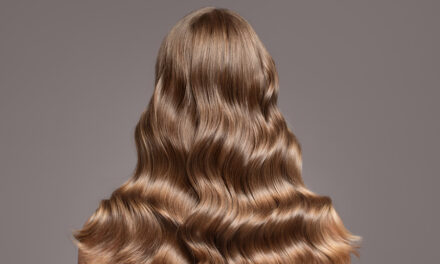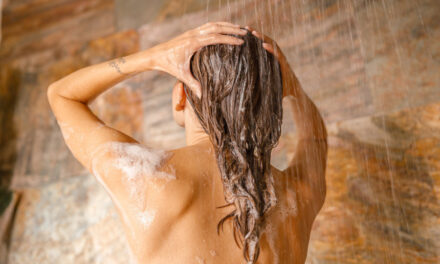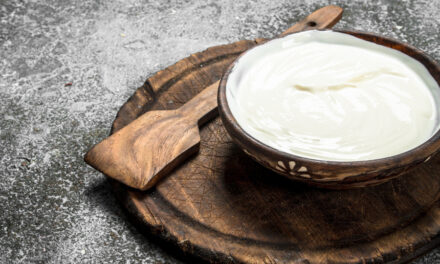
Flat hair can frustrate many, leaving your hairstyle less than lively. Adding texture is critical to transforming limp, lifeless hair into a voluminous, dynamic look.
In this comprehensive guide, we’ll explore everything from understanding the causes of flat hair to maintaining your newly textured tresses, ensuring you have all the information you need to give your hair that much-needed lift.
Understanding Flat Hair
Grasping the underlying reasons for flat hair is crucial in achieving that sought-after voluminous look. Different factors affect your hair’s behavior, from genetics to everyday environment.
Let’s delve into these aspects to understand better what contributes to flat hair and how to counteract these effects.
Causes of Flat Hair
Genetic Factors
Your hair’s volume and texture are primarily determined by genetics. If your parents have flat or fine hair, you will likely have similar hair characteristics, such as density and growth pattern.
Understanding your genetic predisposition can guide you in choosing effective techniques and products to enhance volume.
Hair Care Routine
The volume of your hair is significantly affected by your hair care routine. Using heavy conditioners, oils, excessive styling products, and certain hairstyles like over-straightening can make your hair appear flatter.
Careful selection and use of hair care products and styles can prevent unnecessary flattening.
Environmental Impact
Environmental elements like humidity, heat, and pollution play a vital role in your hair’s appearance. Humidity can cause frizz or shape loss, heat can lead to limp hair, and pollution can weigh down your hair.
Using suitable hair products and protecting your hair in harsh conditions is critical to maintaining its volume and texture.
Identifying Your Hair Type

Understanding the characteristics of all hair types—including texture, density, porosity, elasticity, and scalp condition—is crucial in identifying your hair type. This helps in selecting appropriate hair care products and styling techniques.
- Fine Hair: Fine hair strands are smaller in diameter, often leading to a lack of natural volume and a tendency to look flat. This hair type requires lightweight products and volumizing techniques to enhance the body and lift.
- Straight Hair: Straight hair, often smooth and uniform, can appear flat. Texturizing products and styles add volume and movement.
- Thin Hair: Thin hair, with fewer strands per inch, may look flat. Layered cuts and volumizing products create fuller looks.
- Oily Hair: Oily hair, prone to sebum build-up, can seem flat. Use balancing shampoos and avoid heavy products for volume.
- Kinky Hair: Kinky hair needs special care for its tight curls. Hydrating products and protective styles maintain their health and volume.
Preparing Your Hair for Texturizing
- Choosing the Right Shampoo and Conditioner: Select shampoos and conditioners specifically formulated for volume; these products are designed to lift the hair without weighing it down. Volumizing products often contain ingredients that help to expand the hair shaft, giving a fuller appearance.
- Tips for Washing Flat Hair: When washing flat hair, avoiding over-washing is essential, which can strip the hair of its natural oils, leading to more limpness. Instead, focus on cleansing the scalp thoroughly and applying conditioner mainly to the ends.
- Towel Drying vs. Blow Drying: Towel-drying damp hair, when done gently, can help remove excess moisture without over-drying the hair, while blow-drying blow-dry hair, mainly when used with a diffuser, can add significant volume. Choosing the proper technique based on your hair type and texture is essential.
- Techniques for Blow Drying for Volume: Blow-drying your hair upside-down is a great way to lift the roots and boost the volume. Additionally, using a round brush while blow drying can help to create more body and movement in the hair.
Texturizing Techniques
Transforming flat hair into a textured masterpiece is achievable with the proper techniques.
Styling Products for Adding Texture
These products are ideal for instant texture. Mousse adds volume and hold, sea salt spray contributes a beachy, tousled look, and dry shampoo is perfect for lifting roots and absorbing excess oil, giving an instant volume boost.
The key to success is in the quantity and method of application. Start with a small amount and focus on areas that need the most lift, like the roots.
Evenly distribute through the hair for a balanced texture, and adjust the quantity per your hair’s response.
Hairstyling Tools for Texture
These tools offer various ways to add waves, curls, and unique textures. Curling irons can create everything from loose waves to tight curls, a flat iron can smooth hair with a slight bend for volume, and crimpers can add funky textures for a bold look.
Using heat protectants before applying these hot tools is crucial. This step shields your hair from heat damage and helps maintain its health and vitality, ensuring your styled look is beautiful and healthy.
Hairstyles That Add Volume and Texture
The right hairstyle is a game-changer when it comes to enhancing the texture and volume of your hair.
Easy DIY Textured Hairstyles
Braids, waves, and tousled looks are ideal styles for adding texture to your hair in a straightforward yet effective manner; French braids can create waves and volume if left in overnight, and tousled looks are easily achieved with the use of some texturizing spray and scrunching.
Step-by-Step Instructions:
- Follow easy-to-understand guides to simplify styling at home.
- For natural waves, braid your hair and leave it overnight, then unravel it in the morning.
- To achieve a tousled style, use texturizing spray and scrunch your hair with your hands for a casual, beachy effect.
Professional Hairstyles for Special Occasions
Consider elegant updos or professional blowouts that add volume and sophistication to your look for more formal events. Updos can lift hair away from the face and add height at the crown, while blowouts can create smooth, voluminous styles.
If you’re aiming for a more complex hairstyle or if your hair type is particularly challenging to style, it’s a good idea to seek the help of a professional stylist. They can advise what styles suit your hair type best and provide a high-quality finish for special occasions.
Maintaining Textured Hair
Maintaining the texture and volume of your hair over the long term requires consistent care and attention to detail.
Daily Hair Care Tips
Shielding your hair from the elements like the sun, wind, and pollution is crucial. Using hats and applying protective hair products can help mitigate damage from environmental factors.
Regular trims are essential to prevent split ends and keep your hair looking healthy and whole. Getting your hair trimmed every 6-8 weeks can help maintain its shape and volume, preventing it from appearing flat and lifeless.
Long-Term Health of Textured Hair
Incorporating deep conditioning treatments into your hair care routine is vital for nourishing and maintaining the health of textured hair. These treatments help to replenish moisture, enhance elasticity, and keep hair looking vibrant.
A healthy protein and moisture balance in your hair care regimen is critical to maintaining its texture and strength. While protein treatments help to reinforce hair structure, hair serum, and other moisturizing products ensure that your hair remains supple and resilient.
Common Mistakes and Solutions

Avoid these common mistakes to maintain perfect hair texture.
- Be vigilant about how your hair feels; if it starts feeling heavy or greasy, this could be a sign that you’re using too many products or over-styling.
- When your hair becomes over-texturized, it’s beneficial to switch to using lighter products and reduce how often you style your hair, helping it return to its natural balance.
- To effectively manage the effects of humidity and frizz, consider using anti-humidity sprays or serums and choose more resilient hairstyles to these conditions.
- Healthy hair begins with a healthy scalp, so regular cleansing and gentle exfoliation are crucial for promoting healthier, fuller hair.
- Pay attention to the texture and volume of your hair after styling; if it appears flat or lifeless, it may be time to reevaluate and adjust your hair care and styling routine for better results.
Bottom Line
Remember, adding texture to flat hair is a journey of trial and error. What works for one person might not work for another, so it’s essential to experiment and find what suits your hair type best.
Remember these tips, and you’ll be on your way to more voluminous, textured hair in no time. As a final note, don’t forget about the overall health of your hair.
Consider incorporating a supplement like Vitamins Revive for Hair Care into your routine to boost your hair’s health and appearance.
FAQs
Why is my hair flat with no texture?
Flat hair lacking texture can be due to natural hair type, overuse of heavy products, or lack of volume-boosting styling techniques.
How do you add texture to straightened hair?
To add texture to straightened hair, use texturizing or sea salt sprays, and try scrunching, twisting, or using a curling iron for waves.
How do you add textures to your hair?
Adding texture to your hair can be achieved with styling products like mousse or texturizing spray and techniques like braiding, curling, or rollers.









